1. Brush Their Teeth Regularly (It’s Easier Than You Think!)
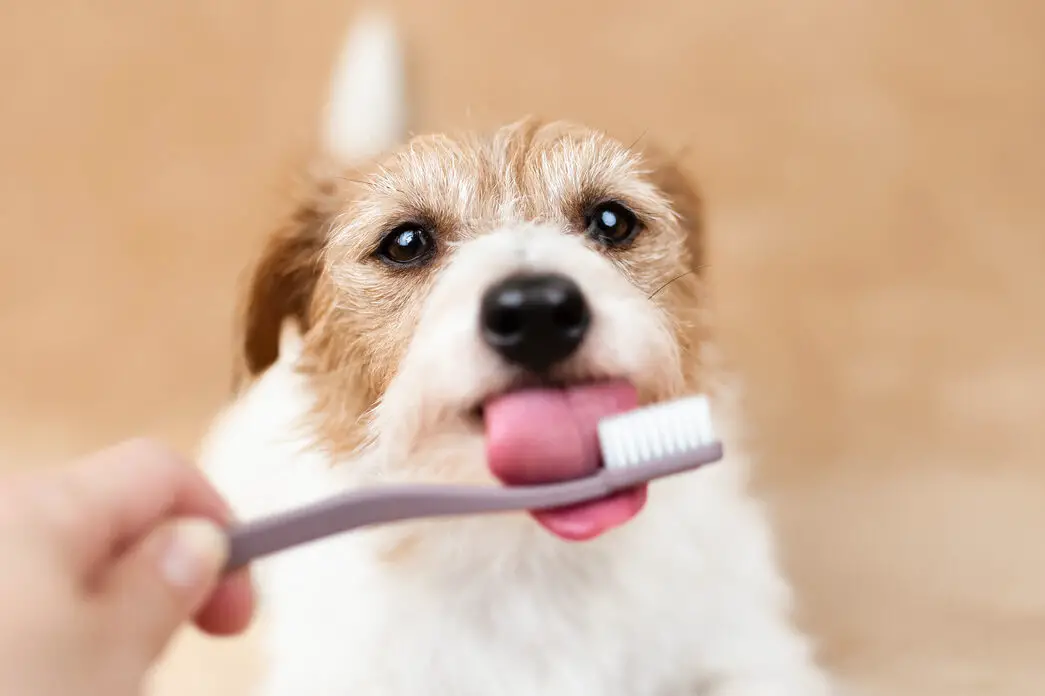
Brushing your dog’s teeth is the best and most effective way to prevent plaque and tartar buildup. Ideally, you should aim to brush daily, but even a few times a week can make a world of difference. Think of it this way: If you didn’t brush your own teeth for weeks, your breath would be terrible, and cavities would soon follow. According to Chimacum Valley, the same goes for your pup! Without regular brushing, food particles and bacteria harden into tartar, leading to inflamed gums, infections, and eventual tooth loss.
The key is using dog-specific toothpaste and toothbrushes. Never use human toothpaste, as it contains harmful ingredients like fluoride and xylitol, which are toxic to dogs. Instead, opt for enzymatic dog toothpaste, which is safe to swallow and actively breaks down plaque. If your pup is new to brushing, start slow—let them lick the toothpaste first, gently rub it on their gums with your finger, then introduce the toothbrush. Reward them with treats or praise after each session to create a positive association. Some dogs may resist brushing at first, but consistency is key. Try brushing at the same time each day, like after a walk or before bedtime. If your dog absolutely hates toothbrushes, consider using a finger brush, which allows you to apply gentle pressure without the bulkiness of a regular brush. With time, patience, and a little bribery (hello, peanut butter-flavored toothpaste! ), most dogs learn to tolerate and even enjoy their dental routine.
2. Give Them Dental Chews for a Fun Cleaning Session
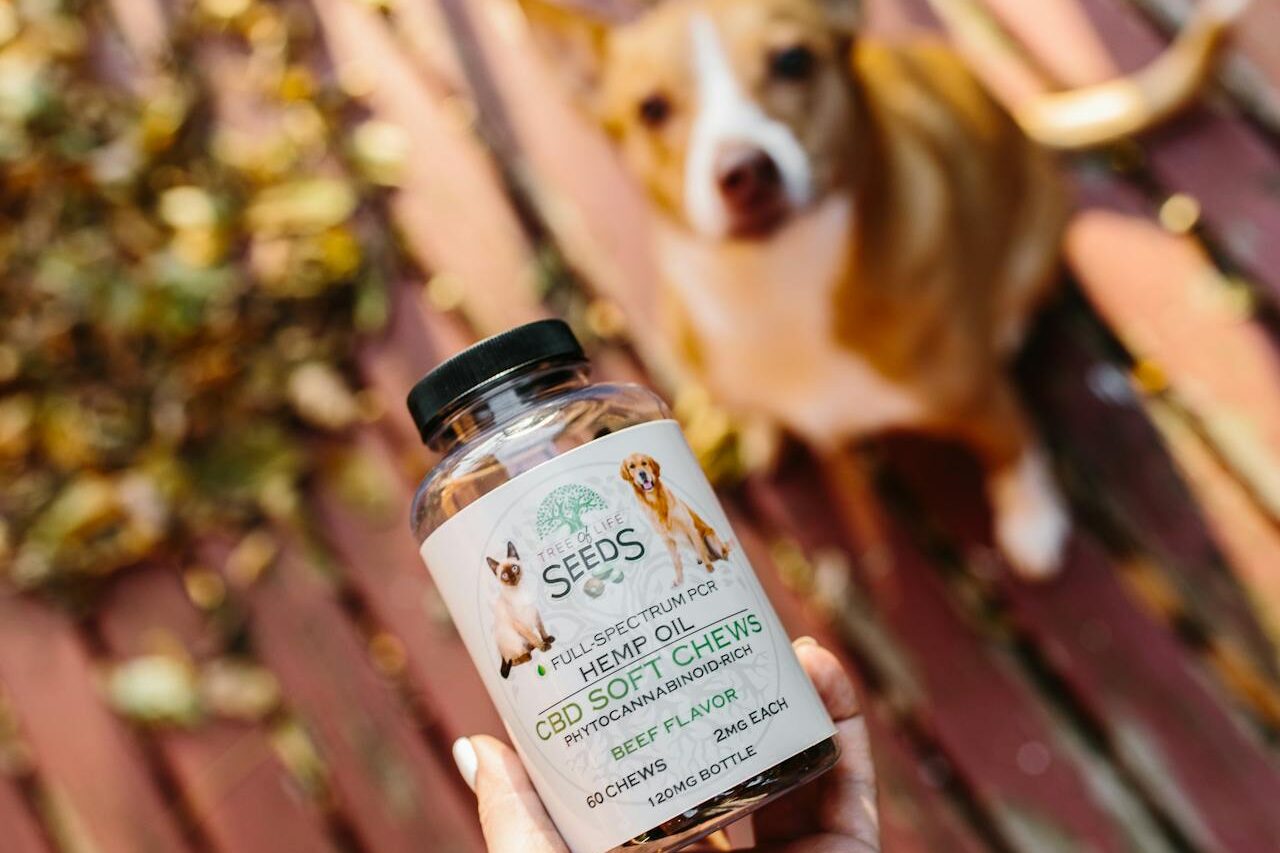
If brushing feels like wrestling with your dog, dental chews can be a lifesaver. These specially designed treats act as a delicious toothbrush substitute, helping to remove plaque and tartar as your pup happily chews away. The texture and shape of these treats help scrape off buildup while also stimulating saliva production, which naturally washes away bacteria. Plus, many dental chews contain ingredients that freshen breath and promote gum health.
However, not all dental chews are created equal, according to Sploot Veterinary Care. Some are loaded with artificial ingredients, excessive calories, or sugars that can actually contribute to dental problems. To make sure you’re choosing the best option, look for chews that carry the VOHC (Veterinary Oral Health Council) seal, which means they’ve been tested and proven to improve oral health. You can also go for natural options like dried sweet potato chews, rawhide alternatives, or yak milk chews. Keep in mind that while dental chews help, they aren’t a replacement for brushing. Think of them as a backup plan—great for in-between cleanings but not the only line of defense. And always supervise your pup while they chew to prevent choking or swallowing large chunks. If your dog is a power chewer, opt for tougher chews that won’t break apart too easily.
3. Use Dental Wipes for a Quick and Easy Clean
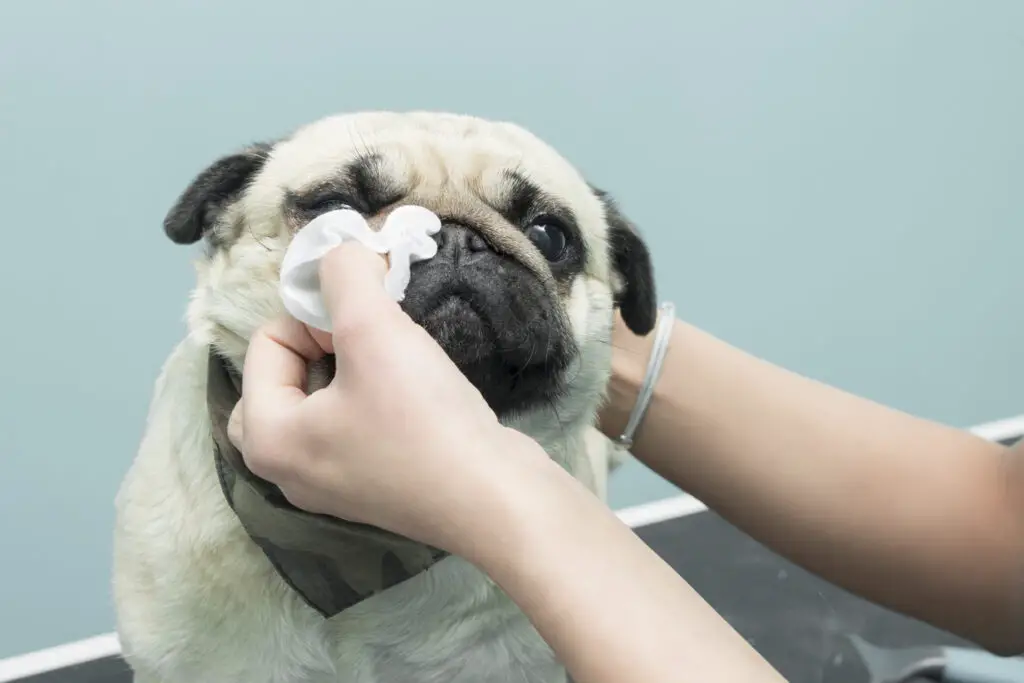
For dogs who refuse toothbrushes but don’t mind a little mouth handling, dental wipes are a great compromise. These pre-moistened wipes are infused with antibacterial and plaque-fighting ingredients, making them a quick and easy way to remove buildup and freshen breath, according to Wellpets. They don’t clean as thoroughly as brushing, but they’re far better than doing nothing.
Using dental wipes is simple—just wrap one around your finger and gently rub it along your dog’s teeth and gums. Some wipes are flavored with dog-friendly tastes like chicken, peanut butter, or mint, which can make the experience more enjoyable. The soft texture also makes them a great choice for dogs with sensitive gums or dental pain. One advantage of wipes is that they can reach areas where chews might not, like the gum line and back molars. However, they work best when used consistently—2–3 times a week at minimum. Keep a pack handy for quick touch-ups, especially after meals or before bedtime. And since they don’t require rinsing, they’re perfect for travel or busy pet parents who need a fast but effective solution.
4. Provide Raw Bones (Nature’s Toothbrush)
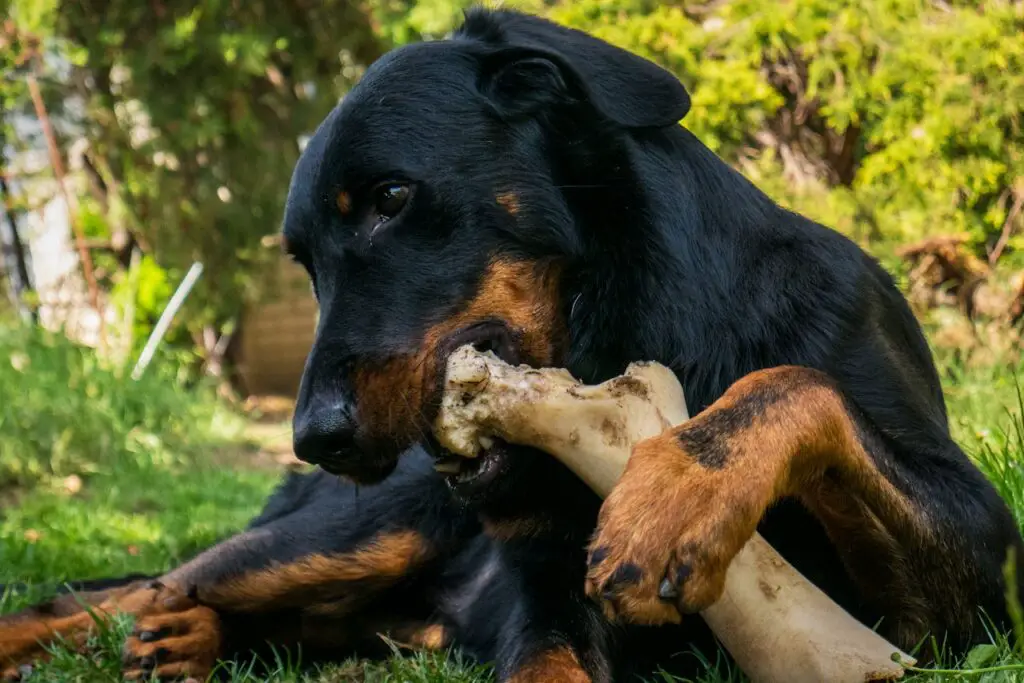
Raw bones aren’t just a treat—they’re nature’s toothbrush! Chewing on raw bones helps scrape off plaque, strengthen jaw muscles, and promote mental stimulation all at once. Unlike processed chews, raw bones contain natural enzymes that break down bacteria, making them an excellent way to support oral health. Many veterinarians even recommend them as a natural alternative to commercial dental treats.
However, not all bones are safe. Cooked bones should never be given to dogs, as they can splinter and cause choking or internal injuries. Instead, opt for raw beef, lamb, or turkey bones that are appropriately sized for your dog’s breed. A general rule is to choose bones that are larger than your dog’s mouth to prevent swallowing hazards. Always supervise your dog while they chew and introduce bones gradually to avoid digestive upset. Some dogs may need time to adjust, especially if they’re not used to chewing hard objects. And if you’re unsure about which bones are safest for your pup, consult your veterinarian for recommendations.
5. Add Dental Water Additives for Effortless Cleaning
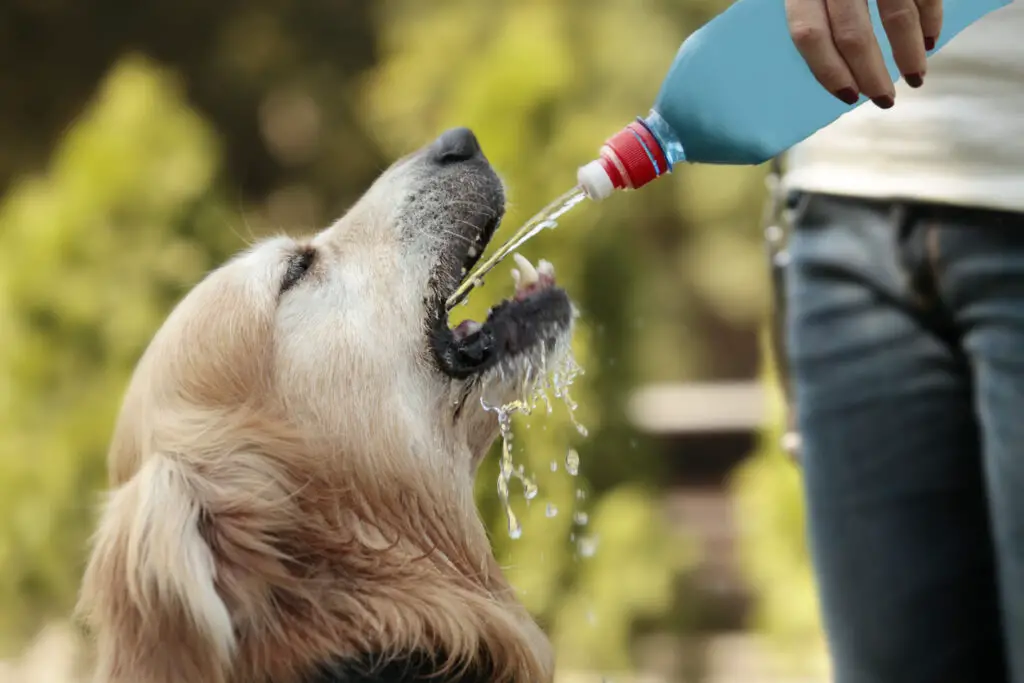
If brushing and chewing aren’t working for your dog, dental water additives can provide a completely hands-off way to improve their oral health. These liquid solutions contain antibacterial and plaque-fighting ingredients that help reduce tartar buildup, freshen breath, and promote healthier gums—all without your dog even noticing. Simply add the recommended amount to your dog’s drinking water and let it work its magic.
Many dental water additives contain ingredients like chlorhexidine, green tea extract, or enzymes that target harmful bacteria in the mouth. According to Innovative Veterinary Care, they’re especially helpful for dogs with chronic bad breath or those prone to dental issues. Some formulas even include added vitamins for overall oral and immune support. The best part? No brushing, no wrestling, no stress. Just fresh breath and cleaner teeth with every sip of water. However, as with any oral health product, it’s important to choose a vet-approved brand to ensure safety and effectiveness.
6. Try Coconut Oil for a Natural Clean
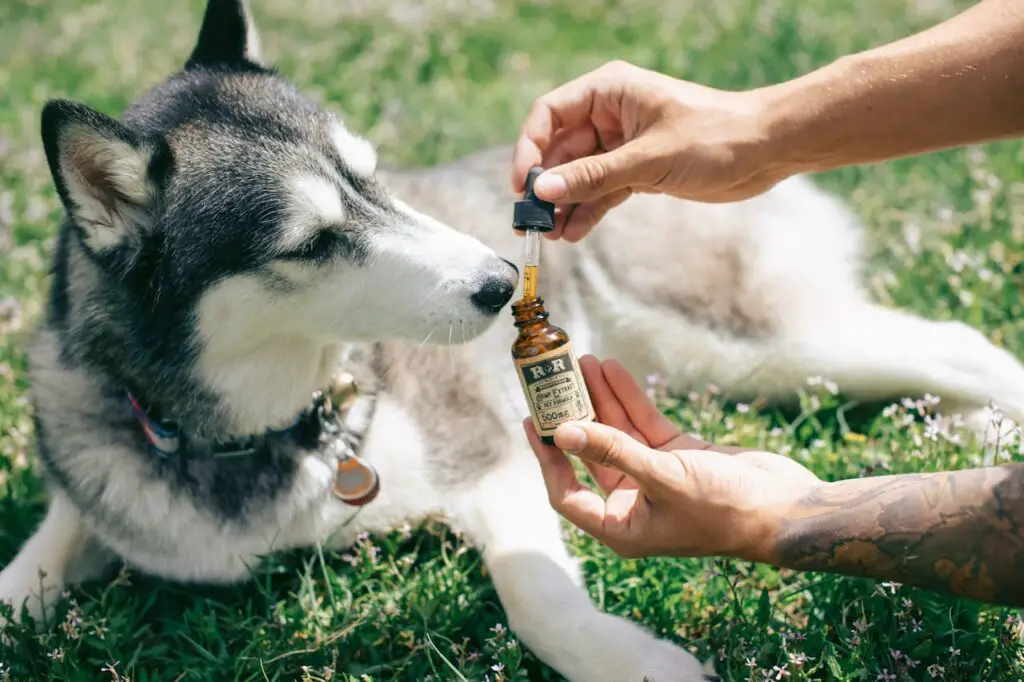
Coconut oil isn’t just a superfood for humans—it’s also a fantastic natural remedy for your dog’s oral health. It has antibacterial, antimicrobial, and anti-inflammatory properties that help fight plaque, reduce gum inflammation, and prevent bad breath. Plus, most dogs love the taste, which makes it easy to incorporate into their routine. According to PetMD, Unlike commercial toothpaste, coconut oil is completely safe for dogs to ingest, so you don’t have to worry about harmful chemicals. There are several ways to use coconut oil for dental care. You can apply a small amount directly to your dog’s teeth and gums using a toothbrush or your finger. The oil will help loosen plaque while its natural antibacterial properties combat harmful bacteria. You can also mix a teaspoon of coconut oil into their food daily or even make a homemade toothpaste by combining it with baking soda and a sprinkle of parsley.
If your dog struggles with inflamed gums or minor oral infections, coconut oil can also serve as a soothing remedy. Simply rub a small amount onto the affected area for relief. Over time, regular use of coconut oil can help keep your dog’s teeth cleaner, their gums healthier, and their breath much fresher. Just be mindful of portion sizes—since coconut oil is high in fat, too much can lead to weight gain or digestive upset. A little goes a long way!
7. Feed a High-Quality Diet to Support Oral Health
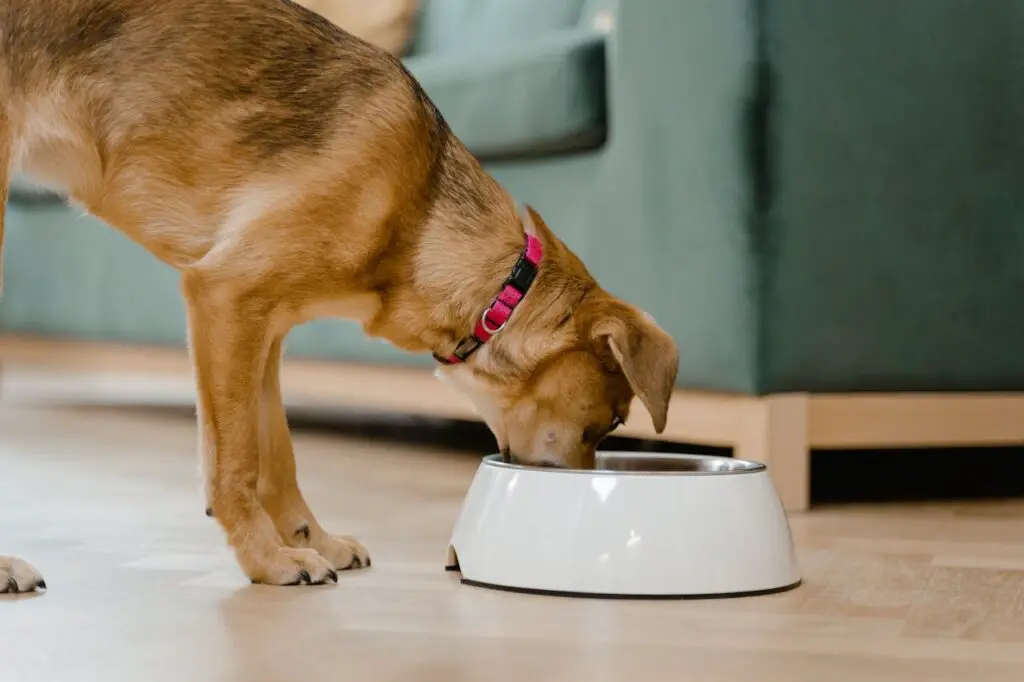
The phrase “you are what you eat” applies to dogs too—especially when it comes to their dental health. A poor-quality diet loaded with fillers, grains, and artificial additives can contribute to plaque buildup, gum disease, and even tooth decay. According to Best Friend Veterinary Hospital, on the flip side, a high-quality, nutrient-rich diet supports strong teeth, healthy gums, and fresh breath. If your dog eats dry kibble, choose a formula designed for dental health. Some kibbles are specially shaped to help scrub teeth as your dog chews, while others contain enzymes that break down plaque. However, not all kibble is created equal—cheap, low-quality brands are often high in carbohydrates, which can stick to teeth and feed bacteria, leading to more plaque buildup.
Raw diets and fresh food diets can be particularly beneficial for dental health. Raw meat contains natural enzymes that help break down bacteria, while raw bones and fibrous vegetables (like carrots and celery) naturally clean teeth. If you’re not feeding a fully raw diet, you can still supplement your dog’s meals with fresh, crunchy produce to support oral hygiene. Ultimately, feeding a well-balanced, species-appropriate diet helps promote not just better dental health but also improved digestion, a shinier coat, and higher energy levels.
8. Introduce Carrots and Apples for Natural Teeth Cleaning
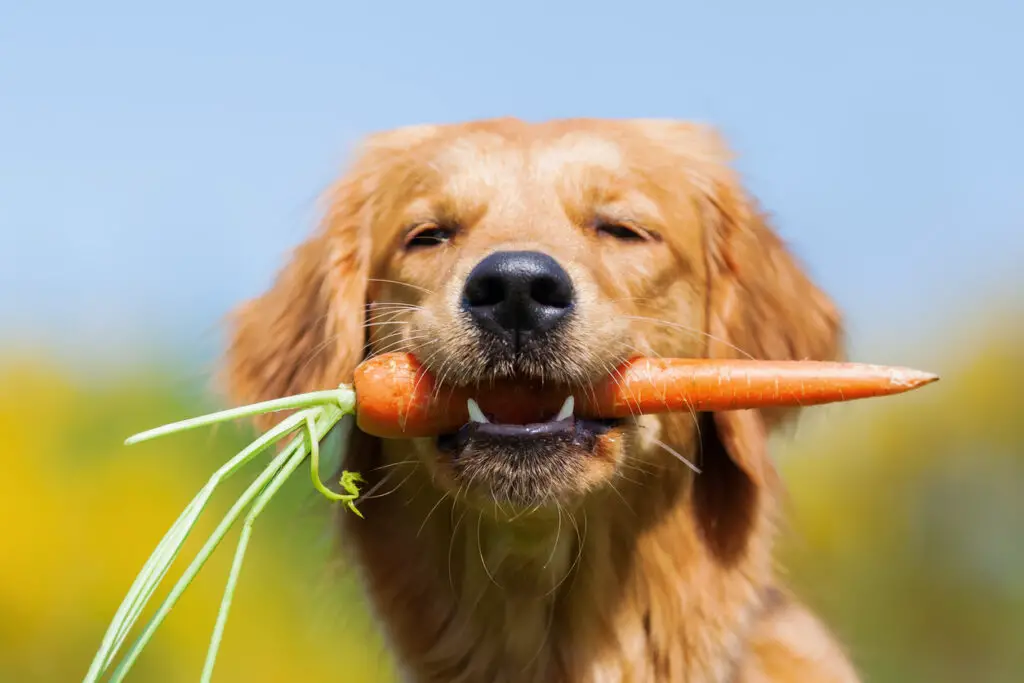
Looking for a simple, tasty, and natural way to clean your dog’s teeth? Fresh carrots and apples are excellent additions to your dog’s diet that double as dental tools. Their crunchy texture helps scrub plaque off teeth, while their natural vitamins and minerals support overall oral health. Carrots are rich in fiber and vitamin A, which promotes strong teeth and healthy gums. The act of chewing raw carrots stimulates saliva production, which helps wash away bacteria and food particles. Plus, they’re low in calories, making them a great snack option—especially for overweight dogs.
Apples, on the other hand, contain malic acid, a natural compound that helps break down bacteria and freshen breath. However, it’s important to remove the seeds and core before giving apples to your dog, as the seeds contain cyanide, which can be harmful in large amounts. Slice apples into bite-sized pieces and offer them as an occasional treat. While these natural options can help reduce plaque buildup, they shouldn’t replace brushing or professional cleanings. Instead, think of them as an added boost to your dog’s dental care routine!
9. Schedule Regular Professional Cleanings
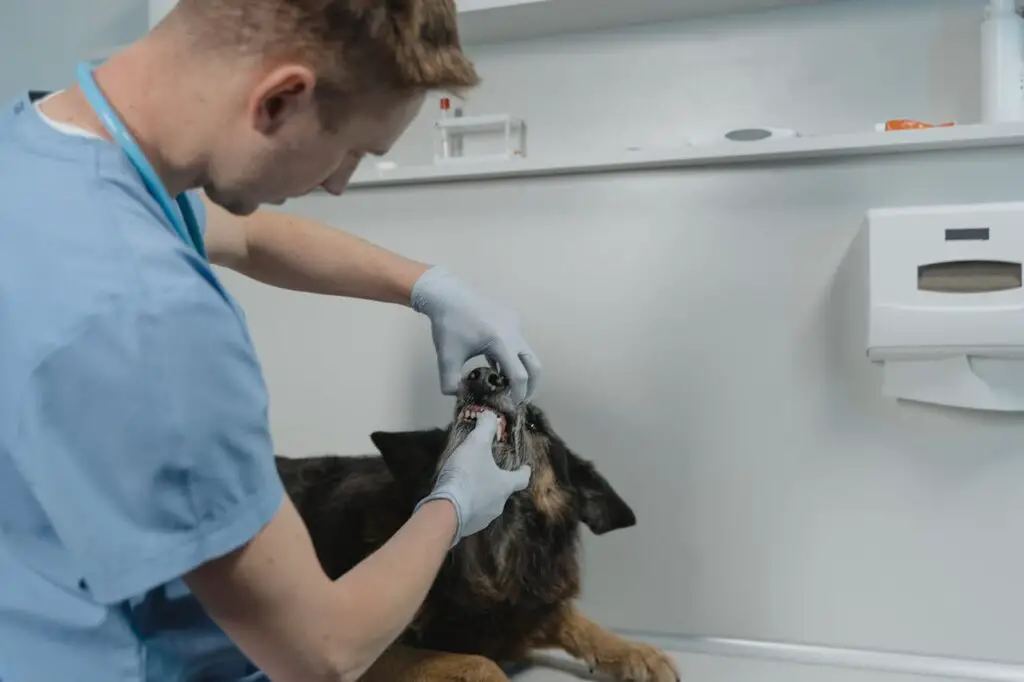
No matter how diligent you are with at-home dental care, your dog will still need professional cleanings from time to time. Just like humans, dogs accumulate tartar over the years, and some areas of their mouth can be difficult to clean thoroughly at home. According to the VCA Animal Hospital, professional dental cleaning performed by a veterinarian can remove stubborn tartar, polish teeth, and detect any underlying oral health issues. Most vets recommend scheduling a professional cleaning at least once a year, though some dogs—especially smaller breeds or those prone to dental issues—may need more frequent cleanings. During the procedure, your vet will check for signs of gum disease, tooth decay, or infections and may take X-rays to assess any hidden problems.
Some pet owners worry about anesthesia during dental cleanings, but it’s often necessary to properly clean below the gumline and ensure a thorough examination. If you’re concerned, speak with your vet about pre-anesthetic blood tests to ensure your dog is healthy enough for the procedure. The benefits of professional cleanings far outweigh the risks—removing tartar buildup can add years to your dog’s life and significantly improve their quality of life.
10. Avoid Table Scraps That Contribute to Bad Dental Health
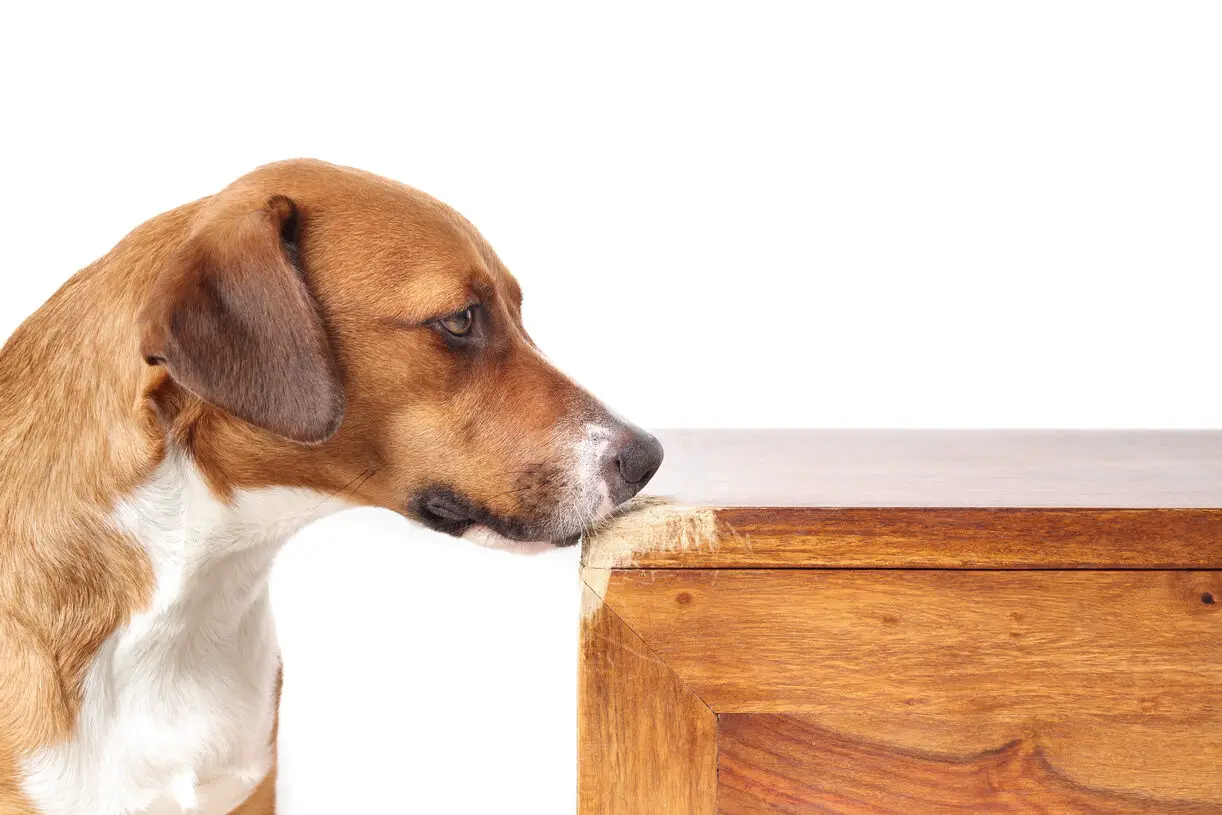
Let’s be honest—when your dog gives you those eyes at the dinner table, it’s really hard to say no. But while sharing food might seem harmless, it can actually contribute to serious dental problems over time. Many human foods—especially those high in starches, sugars, and fats—can stick to your dog’s teeth, creating the perfect environment for bacteria to thrive. This leads to plaque buildup, tartar formation, and eventually gum disease. One of the worst offenders? Sugary foods. While you might not think twice about letting your dog lick a bit of ice cream or take a bite of a cookie, sugar feeds harmful oral bacteria just as it does in human mouths. The bacteria produce acids that erode the enamel on their teeth, making them more prone to cavities and infections. Even “natural” sugars, like those found in honey or syrup, can be problematic if given frequently.
Starchy foods like bread, rice, and pasta are another hidden danger. While these aren’t necessarily toxic, they break down into sugars that stick to the teeth, accelerating plaque buildup. Foods with sticky textures, like peanut butter (especially sweetened varieties), can also cling to teeth and promote bacterial growth. If you’re a pet parent who loves to share, it’s best to stick to healthy, dog-friendly options. Plain cooked meats (without seasoning), carrots, green beans, and apple slices are safe choices that won’t harm their teeth. Just avoid anything with added salt, sugar, or spices. And definitely keep toxic foods like chocolate, grapes, onions, and xylitol-sweetened treats far away from your pup—they don’t just harm the teeth but can be deadly. It’s also a good habit to rinse your dog’s mouth or give them a dental chew after they eat anything sticky or starchy. Even a quick sip of water can help wash away food particles and reduce bacteria buildup. Ultimately, keeping your dog’s teeth clean isn’t just about what you do—it’s also about what you don’t do. Being mindful of what they eat can make a huge difference in their long-term oral health.
11. Consider Using Dental Gels and Sprays
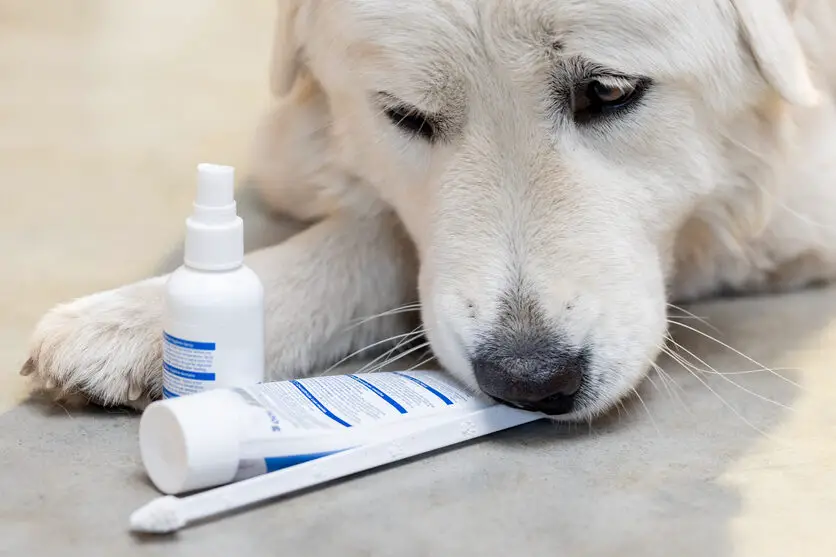
Brushing is ideal, but let’s be real—not every dog is a fan of having their teeth scrubbed. That’s where dental gels and sprays come in. These products are a lifesaver for pet parents who struggle to keep up with brushing, offering a no-fuss way to keep their dog’s teeth clean with minimal effort. Dental gels work by breaking down plaque and killing bacteria that cause bad breath, gum disease, and tooth decay. Most formulas contain enzymes that target bacteria, along with other safe, dog-friendly ingredients that promote oral health. Many gels also have a mild abrasive effect that helps loosen existing plaque. The best part? You don’t even have to brush! Just apply a small amount of gel to your dog’s gums and let them lick it around their mouth—it’ll do the work for you.
Sprays are even easier. A few spritzes inside your dog’s mouth coat their teeth with a protective layer that fights plaque buildup. Some sprays are also breath fresheners, making them an excellent option for dogs with particularly stinky breath. Many formulas use natural ingredients like peppermint oil, aloe vera, or green tea extract, which have antibacterial and soothing properties. While gels and sprays can’t completely replace brushing, they’re great for in-between cleanings or for dogs who refuse a toothbrush altogether. They’re also helpful for older dogs with sensitive gums since they don’t require any scrubbing or pressure. For best results, apply the gel or spray right before bedtime, so it has time to work overnight without being washed away by food or water. And always check for vet-approved products—some over-the-counter options contain artificial ingredients or alcohol, which can be harmful to dogs. If your dog absolutely won’t let you near their mouth with a brush, incorporating a gel or spray into their routine is a game-changer for their dental health.
12. Use Rope Toys for Teeth-Cleaning Fun
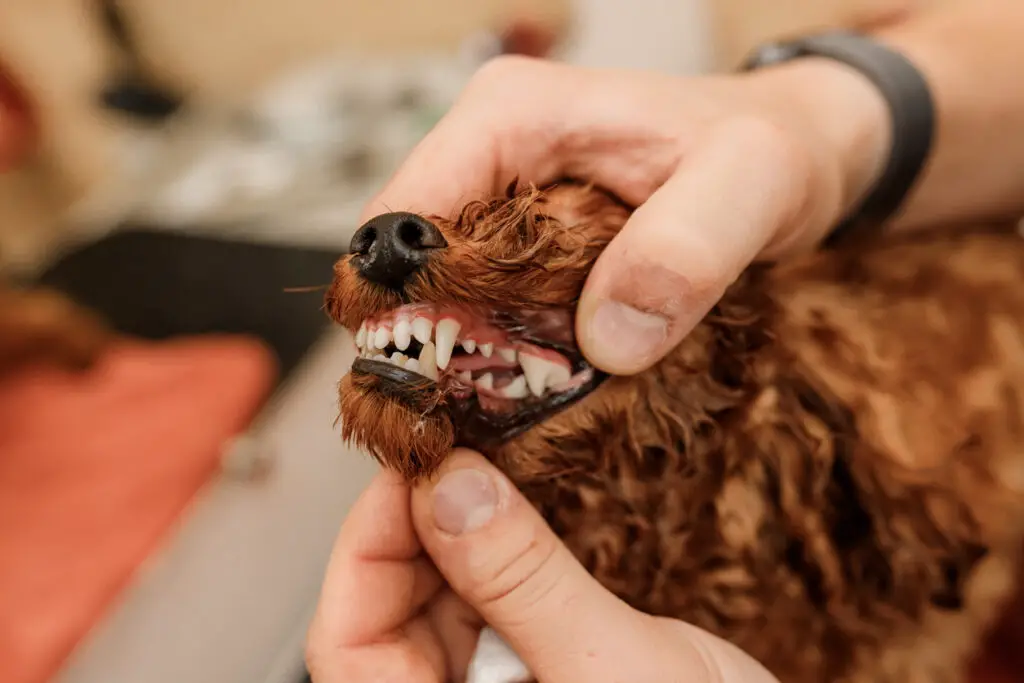
Who knew that playtime could double as a dental care session? Rope toys are one of the best natural teeth-cleaning tools because they act like doggy dental floss, helping to remove plaque and food debris while your pup enjoys a game of tug-of-war. The fibrous strands of a rope toy gently scrape along the teeth, dislodging buildup in hard-to-reach areas, like between the molars. This is especially helpful for dogs who aren’t keen on brushing or other dental treatments. Plus, the act of chewing on a rope toy increases saliva production, which naturally washes away bacteria and food particles.
Not all rope toys are created equal, though. Choose ones made from natural cotton fibers rather than synthetic materials, as artificial fibers can break down into harmful microplastics that your dog might swallow. You can even enhance the dental benefits by coating the rope toy with dog-safe toothpaste or coconut oil before playtime. This way, as they chew, they’re also getting the benefits of antibacterial agents. This is especially useful for teething puppies or older dogs with sore gums. However, always supervise your pup while they play with rope toys—if the fibers start unraveling, it’s time to replace the toy to prevent accidental swallowing. By incorporating toys into their dental routine, your dog will be cleaning their teeth without even realizing it! It’s a win-win for both of you.
13. Start a Dental Routine While They’re Young
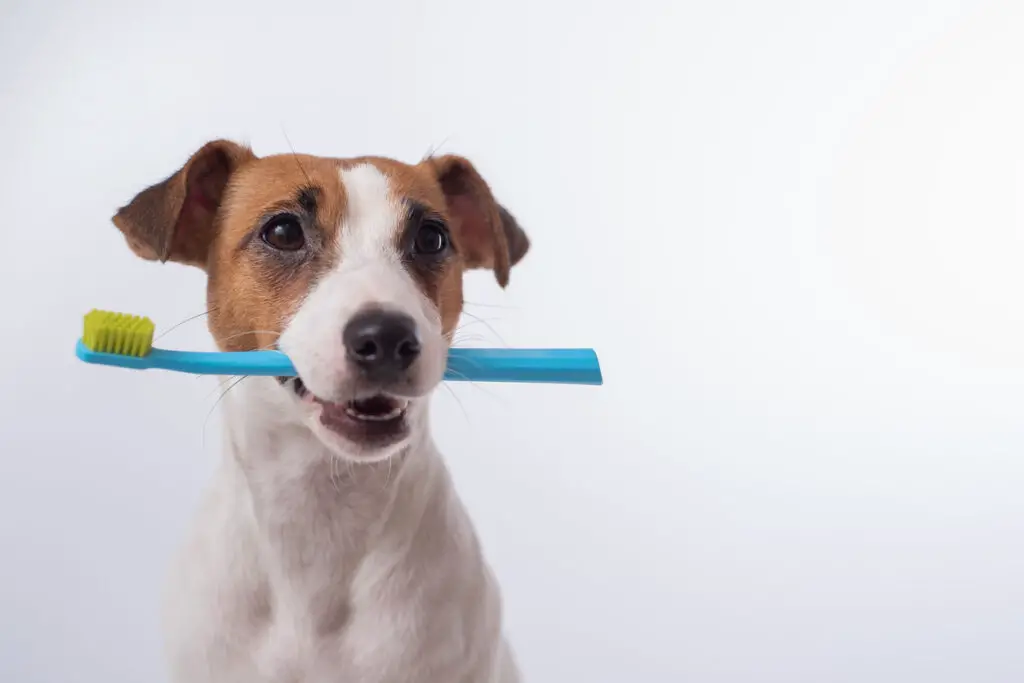
The earlier you start caring for your dog’s teeth, the easier it will be in the long run. Puppies adapt to new experiences quickly, so introducing them to brushing, dental chews, and oral exams while they’re still young makes dental care feel like just another part of their daily routine. Start slow—at first, let your puppy lick toothpaste from your finger so they get used to the taste. Then, gently rub their gums before introducing a toothbrush. Use lots of praise and treats to make it a positive experience! The goal is to create a stress-free association with dental care so they don’t resist it as they grow. But what if you’ve adopted an older dog who isn’t used to dental care? No worries—it’s never too late to start! It just takes more patience. Go step by step, starting with small touches around the mouth before working up to brushing. Finger brushes or soft dental wipes can be a great transition tool for senior dogs or rescues who aren’t comfortable with traditional brushes.
Consistency is everything. Set a schedule—whether it’s brushing every night before bed or using dental chews after meals—so it becomes a natural habit. Think of it this way: Your dog depends on you for their health, and good dental care can add years to their life. By taking proactive steps early on, you’ll be saving them from painful dental problems, expensive vet bills, and unnecessary suffering in the future.


